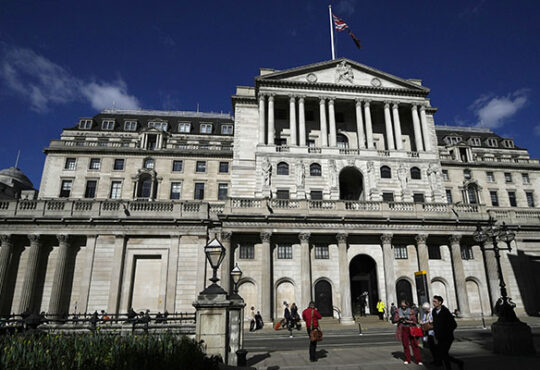
A year on after the historic collapse and bail out of the gilt market, the pensions industry has learned lessons which will be helpful should another fiasco take place.
Becky O’Connor from PensionBee said while the initial problem was caused by a quirk of the way defined benefit (DB) schemes are funded, in the end the reverberations were felt by defined contribution (DC) pension savers, particularly those approaching retirement, who had a higher proportion of what are meant to be safer assets in their plans.
While the initial issue with liability-driven investments (LDI) was resolved through a Bank of England (BoE) bailout and the crisis was averted, the risk of a massive destabilisation having similar consequences in the future has not gone away.
The director of public affairs at PensionBee said: “DB pensions are currently on the whole well-funded and the impact of the mini-Budget could be viewed as a useful dress rehearsal for anything similar in the future that might occur.
“What it taught the industry was that the stability of interest rates or investment returns cannot be taken for granted. We are in a new world of high interest rates, which could possibly remain high for some time, and investment strategies have to alter accordingly.”
O’Connor added: “Talking to people on the investment side in both the DB and DC worlds, it seems that the new mood is that nothing can be taken for granted. Even describing schemes as ‘well-funded’ doesn’t generate the amount of relief you might expect, because it raises the question of how, and based on what conditions, and what happens if those conditions change. It has caused others to view investments that are traditionally considered safe to be risky. It’s almost like the rulebook of pension investment has had to be reviewed with completely new eyes.”
Supply and demand
Some experts are now expecting a magnitude of gilt issuance in the coming years because the BoE is now selling gilts and not buying them.
Bob Campion, senior portfolio manager at Charles Stanley Fiduciary Management, said supply will continue to grow until the UK economy is stronger.
He said: “As with any market, the dynamics are based on supply and demand. Demand is falling because the BoE is not buying any more. On the other hand, as pension funds continue to de-risk, the demand from the gilts market grows. Supply will continue to grow until the UK economy is stronger. The market is still in a state of flux and will continue to be so until these relative dynamics become more stable.”
O’Connor said this shift could also lead to a fall in gilt prices. She said: “All other things being equal, an increase in gilt supply means that gilt prices should fall. However, gilt prices are affected by a variety of factors, including currency strength, inflation and interest rate expectations. Arguably, gilts are already at historic lows and therefore it is not possible to fully predict the impact on gilt prices.”
However, Joe Dabrowski, deputy director of policy & advocacy at the Pensions and Lifetime Savings Association, said a small change in the approach by the BoE is unlikely to have a significant impact on the pensions sector.
He said: “Pension funds hold the majority of UK linkers, which provide a good match for pension fund liabilities. As such, there is always demand for them, especially as most schemes are maturing and de-risking. Schemes have a wide variety of ways to manage their investments, so a small change in the approach by the BoE is unlikely to have a significant impact on the pensions sector.”
Lessons learnt
Interestingly, Campion believes that a year on from the gilt market crisis, the pensions industry is largely satisfied that sufficient measures are in place to avoid a repeat performance.
This follows new research from Charles Stanley Fiduciary Management which reported that 82% of 67 trustees quizzed believe they had the knowledge and skills they needed to handle the crisis and 78% said that their scheme had the right governance in place to cope with it.
Campion said: “Our survey of professional trustees suggested that the vast majority believe the measures taken since last autumn are sufficient.
“A year on after the historic collapse and recovery of the gilt market, the pensions industry seems largely satisfied that measures are in place to avoid a repeat performance. But are they? While a meltdown in the gilt market is now less likely, there is nothing that can be done to prevent it outright. So long as a vast portion of gilt investors continue to use leverage through liability driven investment strategies, another crash is always possible. We are living under the tacit agreement that the BoE will step in again to rescue the market if needed; otherwise without this unwritten promise, pension funds would have to abandon liability-driven investment strategies. That would put a massive strain on UK plc.”
Interestingly, Charles Stanley Fiduciary Management’s poll also found that 72% are confident using LDI as a tool to manage risk.
Campion agrees that LDI is still a good tool to manage risk, because the alternative would shift the burden towards sponsoring employers to fund the schemes.
Campion said: “So long as pension funds have robust measures in place to provide collateral when needed, even in times of extreme stress, then LDI remains a good tool. If funds didn’t use LDI they would have to hedge less (and therefore run more risk) or invest less in growth assets – and that would shift the burden towards sponsoring employers to fund the schemes.”
Pension fund behaviour and asset allocations have also changed as a response to the crisis in the gilt market.
Miles Tym, fund manager at M&G Investments, said that schemes must have rigorous stress testing to ensure they have enough liquidity in volatile market conditions.
He added that although derivative-based LDI hedging is still a part of the pension scheme landscape, the potential for market volatility to necessitate additional collateral calls is now much more in focus than previously.
He said: “The most significant lesson and response from the panic of late 2022 is the appreciation that solvency and liquidity are not the same thing. The derivative structures that were being used were hedging specific liabilities and were therefore not speculative in that sense. Using derivatives instead of cash bonds to hedge interest rate liabilities releases cash.
“However, if you use too much of this cash to buy fairly or very illiquid assets, you will not be able to post additional collateral when or if your derivative positions move against you. Liabilities will have fallen in line with your derivative positions, but this brings no immediate cash pay-out, whereas the additional collateral cash call is immediate. Hence whilst in no way insolvent in the long run, some pension schemes did face a liquidity crisis, in which they were forced to sell their most liquid cash assets.”






